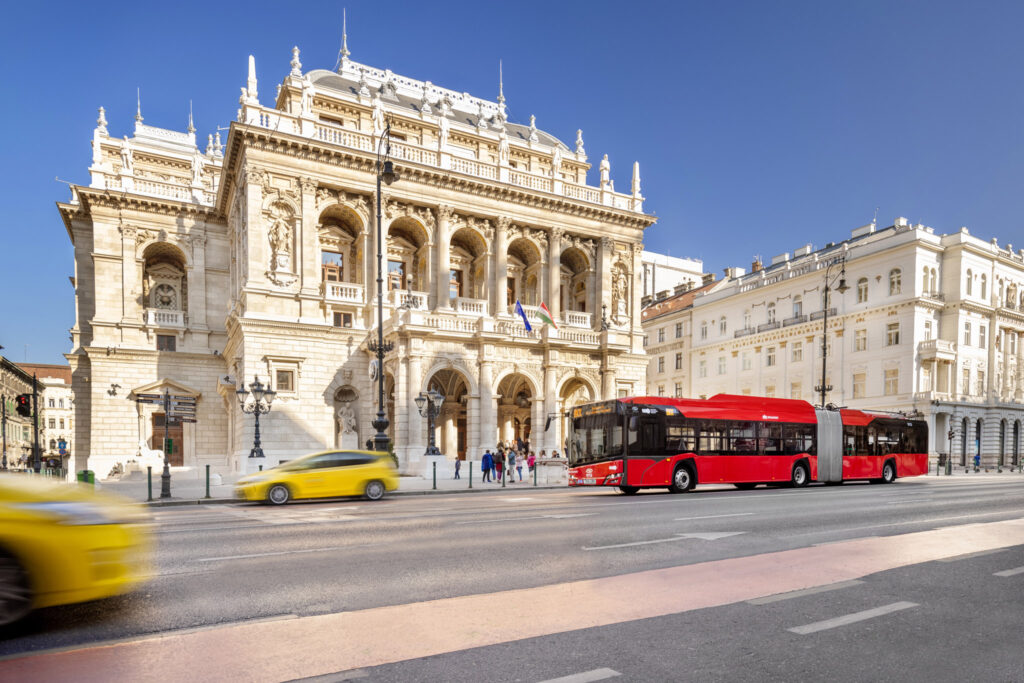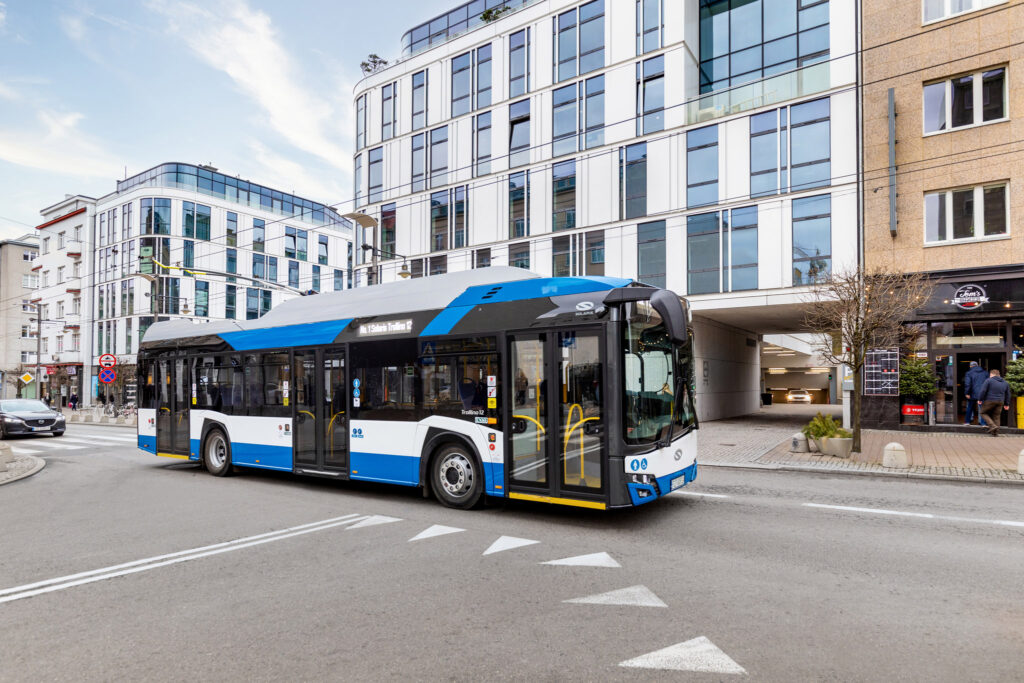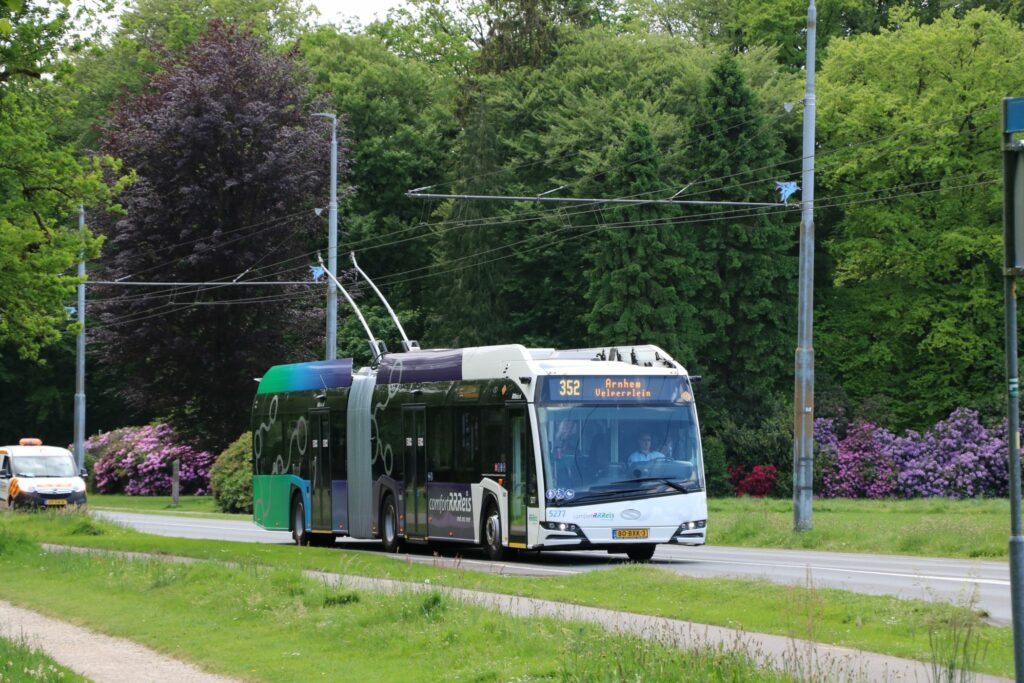UITP: 140 years of mobility and one question that remains as relevant as ever
Before the Summit in Hamburg begins, it is worth taking a closer look at what UITP is.

Trolleybus revival
Over 130 years of tradition, and they are still appreciated and being developed. Trolleybuses have definitely stood the test of time, and thanks to additional batteries, they can now also run outside the catenary network. These modern, quiet, and emission-free vehicles, along with electric and hydrogen buses, successfully represent the high standard of urban living.

Trolleybuses currently operate in about 300 cities worldwide. Although often considered historical and niche modes of transport, they are now proudly returning to the urban transport scene as a reflection of modern sustainable mobility. Today, they are one of the most efficient solutions in zero-emission public transport.
Quiet and completely free from harmful exhaust emissions, trolleybuses are perfect vehicles for urban transport. With 130 years of history and experience, they are now integrating more innovative technologies such as additional batteries, in-motion charging (IMC), and advanced electronic systems that assist drivers and enhance safety. Thanks to the new solutions, trolleybuses can also operate outside the catenary networ. This gives operators greater flexibility and the opportunity to create new, zero-emission routes that were previously inaccessible for these vehicles.
For these reasons, many cities in Europe – Prague, Bratislava or Gdynia – are not giving up on trolleybuses but are instead investing heavily in their development or reintroducing them into their transport systems.
Let’s take a look at some interesting trolleybus projects from recent years!
On the streets of Riga there are trolleybuses unique in Europe – equipped with both batteries and hydrogen fuel cells. The hydrogen system significantly increases the range the vehicle can cover when disconnected from the power supply network. Riga trolleybuses can cover up to 100 km without traction! This innovative technology has been implemented on line number 4 in Riga, where 10 such vehicles are operating.

Gdynia, located on the Baltic Sea, is known as one of the European centers for trolleybus technology. Trolleybuses are an integral part of the landscape of this port city.
In 2020, however, exceptional vehicles – so-called super-trolleybuses – will join the Gdynia fleet. Gdynia already has experience with trolleybuses equipped with batteries charged while driving, but the supertrolleybuses represent a new technological level. They have dual homologation – as trolleybuses and as electric buses. The larger-than-standard-capacity battery is the main power source and can be charged in two ways: while driving – using pantographs that draw power from the overhead line, and while stationary – via a plug. The batteries allow the supertrolleybuses to cover 70% of the route off the catenary, and during the remaining 30% of the route, the vehicles recharge. Thanks to these state-of-the-art solutions, the supertrolleybuses are significantly improving the quality of public transport in Gdynia.

Trolleybus line number 2 in Bergen is 7.5 km long and has been operating since 1950. It is the only trolleybus line in Norway and one of two in the entire Scandinavia – the other is in Landskrona, Sweden. In 2023, Bergen purchased trolleybuses equipped with 55 kWh batteries, which allow it to run about 11 kilometres without being connected to the catenary network. This is important because line number 2 was recently extended by a new section in another part of Bergen. To reach it, the trolleybus must travel 2 kilometers through the picturesque city center on battery power alone. Then they reconnect to the traction and continue their journey.
Bucharest has the largest transport network in Romania and one of the largest in Europe, with 15 trolleybus lines totaling over 160 km, served by 265 vehicles. Unfortunately, many of these trolleybuses are very old and run-down, dating back to the 20th century. Nevertheless, Bucharest sees a future in this technology. In 2022, the city made an impressive purchase of 100 modern trolleybuses equipped with advanced safety systems and amenities for passengers and drivers. The new trolleybuses also have batteries, allowing them to cover up to 20 km without connecting to the catenary network. The purchase of these zero-emission vehicles is another step for Bucharest towards improving the quality of life in the city.
Trolleybuses returned to Prague in 2019 after a half-century absence. As part of the trolleybus system reconstruction, in 2023, impressive vehicles hit the streets of the Czech capital – the longest trolleybuses ever used in public transport in the Czech Republic. These 24-meter vehicles have two joints and can accommodate nearly 180 passengers. Twenty of these mega-trolleybuses run today on the emission-free line 59, which connects Veleslavín station to Prague Airport.
The bi-articulated trolleybuses are an ideal solution for the growing transport needs of the crowded metropolis. Thanks to them, the capacity of the line increased by up to 30%, significantly improving passenger comfort. These modern, zero-emission trolleybuses, despite their length, are as easy to handle as conventional buses. They are a symbol of the changes in the way and possibilities of travelling, combining modernity with an ecological approach to urban transport.
Line 71 in Bratislava is the most popular and busiest line in the capital of Slovakia. It runs between the Central Railway Station, Miletičová Street and Dolný Honmi Street, and it is on this line that double-articulated trolleybuses can be found. These capacious vehicles have proven to be an excellent solution for high-traffic routes. The introduction of 16 megatrolleybuses, which can accommodate around 200 passengers, increased the capacity by almost 50 people per course. During peak hours, trolleybuses run every 3-4 minutes, significantly reducing line congestion and improving travel comfort for passengers in Bratislava.
Arnhem is the only city in the Netherlands where trolleybuses operate. It has a trolleybus system comprising six lines served by 43 “trolley” vehicles. At the beginning of 2024, the city’s fleet was enriched with new models equipped with In-Motion-Charging technology and batteries that allow autonomous driving for over 12 kilometers.
These parameters are ideal for line 352, the main route in Arnhem, which connects the central station with the bus station in Wageningen municipality. This line is approximately 17 kilometres long and was previously served by buses. It is estimated that 75% of the route is covered by trolleybuses autonomously, using only batteries, without connecting to the catenary network. The operator’s plans include extending the line from Wageningen to Ede-Wageningen, which will allow the trolleybuses to cover up to 82% of the route autonomously.

Trolleybuses are becoming increasingly popular for good reason. They are a modern, emission-free solution that benefits both residents and the environment. Thanks to technological advances, they are an excellent alternative to combustion vehicles and are a symbol of sustainable urban mobility. Combining tradition with modernity, trolleybuses are an effective response to the challenges of modern agglomerations.
Before the Summit in Hamburg begins, it is worth taking a closer look at what UITP is.
Learn more about the changes introduced by GSR2 and how they contribute to protecting all road users.
BRT in Aalborg: the city's solution for enhancing urban transport – what makes it so effective?